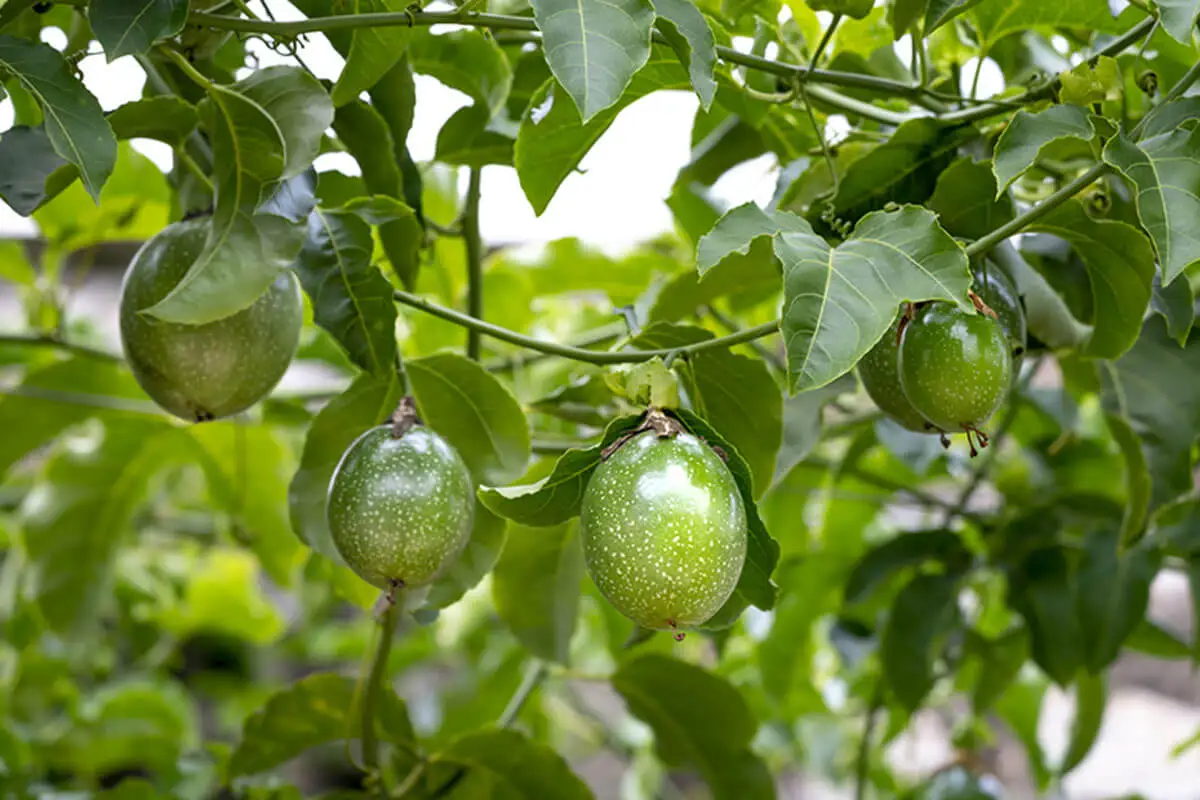How to Plant and Care for Passion Fruit at Home

Passion fruit is a very desirable exotic fruit that comes from a plant of the same name. In this article, we´re going to teach you all about it so you can plant passion fruit at home and take care of it like a professional. You will be able to enjoy the beauty of the flower adorning your garden and, when harvest time comes, you will be able to delight yourself with juices, sauces, and desserts made from passion fruit.
If you already have a craving for this fruit and want to experience planting and caring for your passion fruit, then read on!
Where does passion fruit come from?
Passion fruit is the fruit of a climbing plant known as passion fruit (Passiflora edulis), which has other popular names: blue passion fruit or passion flower. It´s native to South America, specifically in tropical regions. However, and to the surprise of many, although it comes from warm areas, this plant is also very resistant to other climates.
This plant is easy to grow and it is worth mentioning that, when it reaches the years of age, it can be expected to reach up to meters in height. As a good climber, its stems grow by attaching to other trees or surfaces. It can even be used to separate spaces in the garden or to add more privacy to your property.
Its flowers are a real spectacle. They represent both sexes at the same time, although they need to be pollinated to reproduce.
They can be distinguished by their beautiful colors, between blue and violet. In addition to adorning your garden and providing you with delicious fruits, you can also use the plant as a source of alternative medicine (always under medical approval, of course).
Scientific articles have detailed that passionflower is a plant with potential to complement the treatment of anxiety, in addition to providing anti-inflammatory nutrients and antioxidants. Passion fruit also has a high content of vitamins A and C.

We think you may also enjoy reading this article: Passion Fruit: Origin, Types, and Characteristics
How to plant passion fruit at home and take care it
Now that you know the benefits of growing passion fruit at home, let’s show you how to do it and how to take care of your plant.
1. Gather the seeds
The passion fruit has between 180 and 200 seeds inside, which you can select to start planting at home. You get them from a passion fruit that you have bought at any store.
All you have to do is rub your seeds to remove the pulp, wash them very well and let them dry for about 3 or 4 days in a shaded space.
2. Prepare the substrate
To plant your passion fruit plant, you must first prepare the substrate. It should contain soil, coarse sand, and compost, all in equal parts. Thus, nutrients for the plant and good drainage are guaranteed.
In this sense, it´s important that if you´re going to plant in the garden, take a stick to make furrows of about 5 centimeters. This way, the seeds won´t be waterlogged when you water the plants.
3. Plant your seeds
With the substrate ready, it’s time to plant the dry seeds. Place them in the furrows and with a distance of 1 centimeter between each one. Use a mixture of the substrate we described before to lightly cover the seeds.
When you finish this step, you need to water the seeds (without going to the extreme). Moistening the seeds is important so that they mix with the soil and can start germinating.
We think you may be interested in reading this, too: The Longan or Dragon’s Eye: How Nutritious Is this Exotic Fruit?
4. After planting passion fruit at home, you need to care for the plants
Within a few weeks of planting, you will have noticed that small green plants have germinated and are starting to grow. It´s crucial that you start caring for them promptly. To do this, you should fertilize with organic products and compost. For compost, you can use organic waste or worm castings.
Keep the substrate humid, but avoid waterlogging. Keep in mind that if it rains, it will not be necessary to add more water.
Also, make sure that the plants receive a good dose of direct sunlight. As the plant grows, it will be necessary to prune it so that it does not get out of control and to put some structures for it to get entangled. This is why it´s a great idea to plant passion flowers around a fence.
Finally, remember that passionflower flowers need to be pollinated to bear fruit. This happens naturally thanks to the presence of insects such as bees, butterflies and hummingbirds. Otherwise, it will be necessary to hire qualified personnel to do a manual pollination.

5. Harvest the fruits
After planting and caring for your plant, it´s finally time to harvest the passion fruit to enjoy it in the preparations of your choice. Keep in mind that the ideal time for harvesting is when the fruits are yellow or reddish; this indicates that the fruit is ripe and ready to eat.
Go plant and care for your own passion fruit at home!
Now that you know all the benefits and properties that passion fruit has and how easy it is to plant and care for it, don´t hesitate to do so! The attention required by this plant is minimal and the recipes you will get from it are extremely delicious.
All cited sources were thoroughly reviewed by our team to ensure their quality, reliability, currency, and validity. The bibliography of this article was considered reliable and of academic or scientific accuracy.
- Fonseca, L. R. D., Rodrigues, R. D. A., Ramos, A. D. S., da Cruz, J. D., Ferreira, J. L. P., Silva, J. R. D. A., & Amaral, A. C. F. (2020). Herbal medicinal products from Passiflora for anxiety: An unexploited potential. The Scientific World Journal, 2020. https://www.hindawi.com/journals/tswj/2020/6598434/
- He, X., Luan, F., Yang, Y., Wang, Z., Zhao, Z., Fang, J., … & Li, Y. (2020). Passiflora edulis: An insight into current researches on phytochemistry and pharmacology. Frontiers in pharmacology, 11, 617. https://www.frontiersin.org/articles/10.3389/fphar.2020.00617/full
- Taïwe, G. S., & Kuete, V. (2017). Passiflora edulis. In Medicinal Spices and Vegetables from Africa (pp. 513-526). Academic Press. https://www.sciencedirect.com/science/article/pii/B9780128092866000248
This text is provided for informational purposes only and does not replace consultation with a professional. If in doubt, consult your specialist.








